Readers Write: EHR Optimization: The New EHR Life Cycle
EHR Optimization: The New EHR Life Cycle
By Nathan Koske
Nathan Koske, MBA is director of Meditech professional services for CereCore.

Modern EHRs are significant investments that constantly change and require ongoing maintenance and improvement to realize value and benefits for patient care, satisfaction, and hospital operations. How can your optimization efforts be strategic ones? Let’s examine key ingredients for successful EHR optimization so that your healthcare organization can be prepared for the transition and understand the components of this ongoing life cycle.
Optimizations are typically most successful when they are started one to two months post go-live. Even if you are amid an EHR implementation, it’s not too early to start making plans for optimization. Organizations often simply can’t fit everything into an implementation, making optimization efforts something to consider from the start.
Regardless of the type of optimization you are planning, it is important to give your users sufficient time to become familiar with the product, as well as wind down from the grueling process of going live with a new EHR environment.
Your new EHR offers capabilities that may spark ideas, and clinicians may have a new lens to explore what’s possible and how that can improve workflows and patient care. This adjustment period is important in helping users realize what is needed instead of reacting to what was just different from their previous system.
The population of data into the live system is another big factor into that adjustment period. Simply put, some things you can’t optimize until the data and/or workflows exist. After the first month or so of use, users will also be able to identify which workflows actually need to be evaluated for improvement versus functionality that may benefit from more education. Focusing on workflows that need to be improved will go far in yielding value in your optimization efforts.
Conduct a formal assessment of your current EHR environment as a first step in launching an optimization project. Review the system and workflows and gather feedback from everyday users within a formal process.
A holistic EHR assessment can identify areas of improvement that weren’t apparent during earlier phases in the life cycle. It is important to understand that although the goal of both your organization and your EHR software provider is a solid implementation, the viewpoints and responsibilities are different. An experienced EHR partner can help you assess and bridge the gaps, whether that is a specific skillset or translating software speak into clinical operations reality. The scope of an EHR assessment can vary depending on the perspective of the stakeholder involved.
Take these actions to assess your processes and inform your optimization priorities:
- Start by rounding and talking to users about features that they may not understand fully. Quick wins are often gained by showing users how to do something on the spot.
- Interview users from various departments and roles and ask them about pain points. What’s not working well?
- Review system configuration details.
- Observe users to identify opportunities for streamlining workflows.
- Document all pain points and optimization opportunities and set a time to prioritize them.
- Determine the EHR functionality that you have contracted for from your EHR vendor. When reviewing your list of functionality, it is crucial to determine what is being underused or possibly not used at all.
- Collect your findings into a concise document that is grouped by impact areas such as patient safety, revenue, regulatory, user satisfaction, and patient satisfaction. Organizing this information will also help you prioritize findings and determine next steps.
A thorough assessment of your EHR could produce optimization documents that contain a significant number of findings. The results may be overwhelming to leaders and project team members. Don’t get discouraged. It’s natural for EHR implementations to need optimization.
Prioritizing the assessment findings will require strategic decisions, but in the end, your organization should walk away with a roadmap that will guide optimization projects and future investments.
For example, you may need to weigh the benefit of certain optimization items based on whether it could improve physician productivity or just make life easier for clinical staff. Or, it could make sense to prioritize an optimization that would generate revenue because a manual process wasn’t leading to consistent revenue capture. Patient safety or potential regulatory compliance items are usually high impact items to consider, too.
During the assessment prioritization review, the leadership team could decide to attack all high priority findings or those identified as low-hanging fruit as a way to make quick progress. It is often beneficial to break down the level of effort by service line or department to prevent putting too much strain on your healthcare system.
IT teams should be prepared to have conversations with your leadership team and key stakeholders about the additional investment (time and money) and skillsets that will be needed to move forward with optimization efforts. For instance, Epic offers tools and recommendations for optimization, but you may need to request budget for those types of things or additional resources. When you request budget, It’s important to communicate how this technology aligns with and contributes to the organization’s goals.. It may be clear to IT that if we execute this initiative, we’re going to get to the anticipated goal, but that might not be clear to operations. It’s important to draw those lines of connection.
The strategic roadmap that results from the EHR assessment and optimization prioritization session will identify and help articulate the value that can be realized by the organization, and the true benefits are achieved through skillful execution.
Once you have tackled your optimization roadmap, it’s time to kick off the optimization phase of your EHR journey. At this point, change management principles are critical for implementation and ongoing success. Regardless of what system you’re on, change management is pivotal to optimization success. Inform users about how to use the system in a new way, or even train them if it’s a significant change, so that they will begin the new approach rather than continuing to do the same thing that they’ve always been doing the same way that they’ve always been doing it.
Take these actions to help make your optimizations a reality:
- Assign specific staff to the optimization project. The optimization phase should be treated like any project, so you should assign a project manager to oversee the process.
- Develop a clear project timeline. The project manager should set important milestones and outline go-live dates for new functionality in departments.
- Communicate with staff about the optimization project and hold a kickoff.
- Establish communication and project meeting cadences that make sense for those involved. Maintain a project plan to keep everyone on track.
- Determine if any of the optimizations or new functionality being implemented will require end-user education and develop a training plan.
The EHR is the lifeblood of any healthcare organization. Optimization that goes beyond basic maintenance and focuses on continuous improvement can provide significant tangible and intangible benefits across the organization.


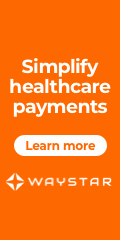









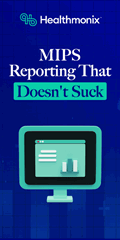


















































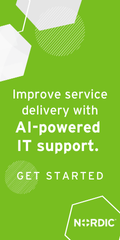










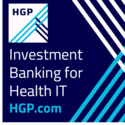


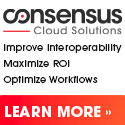





The primary point of using the Cloud is using operating expenses vs limited capital ones and avoiding having to update…